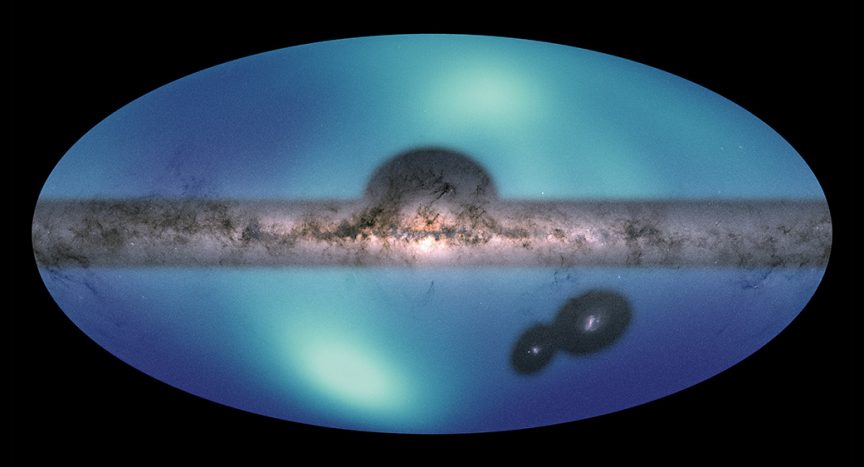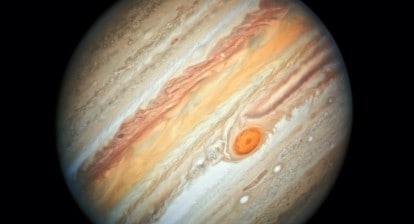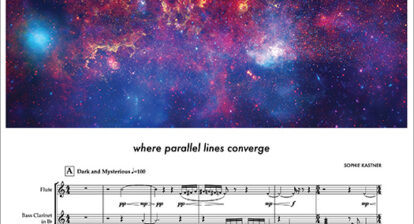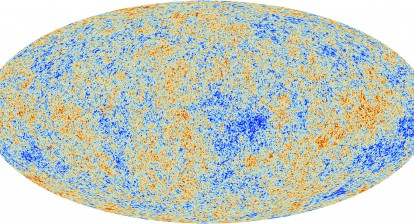Behold this stunning image of the outer edges of our galaxy, the Milky Way!
For the very first time, NASA and ESA (European Space Agency) have released a new all-sky map of the outermost region of our galaxy, using ESA’s Gaia mission and NASA’s Near Earth Object Wide Field Infrared Survey Explorer, or NEOWISE. This region is known as the galactic halo and it lies outside the spiral arms of the Milky Way. The halo contains very few stars but scientists predict that it contains a massive reservoir of dark matter – the invidisble substance that makes up the majority of the mass of the universe and is five times more common than all other matter including stars, planets and gas clouds.
The observations show how the Large Magellenic Cloud or LMC (the larger of the two dwarf galaxies orbiting the Milky Way) floats through galactic halo, its gravity leaving behind a wake. The LMC resides 160,000 light-years from Earth with less than one-quarter the mass of the Milky Way and its wake is about 200,000 light-years to 325,000 light-years from the galactic center. This is the first time data also provides a detailed view of its shape, size, and location.

Images of the Milky Way and the Large Magellanic Cloud (LMC) are overlaid on a map of the surrounding galactic halo. The smaller structure is a wake created by the LMC’s motion through this region. The larger light-blue feature corresponds to a high density of stars observed in the northern hemisphere of our galaxy.
Credits: NASA/ESA/JPL-Caltech/Conroy et. al. 2021
The disturbance in the halo, caused by the LMC’s wake, will give astronomers an opportunity to study the dark matter that is predicted to fill the halo space. Although invisible, dark matter can observed by how its gravity affects planets, stars and galaxies. In fact, dark matter is the reason galaxies are able to retain their shapes, without it they would fly apart as they spin.
According to NASA “The wake observed in the new star map is thought to be the outline of this dark matter wake; the stars are like leaves on the surface of this invisible ocean, their position shifting with the dark matter.”
As the Large Magellenic Cloud orbits our galaxy, the gravity of dark matter causes a drag, slowing it down. This will eventually result in the LMC’s orbit getting smaller and smaller, until it eventially crashes into the Milky Way in about 2 billion years. Scientists think this is how massive galaxies are formed in the universe.
“This robbing of a smaller galaxy’s energy is not only why the LMC is merging with the Milky Way, but also why all galaxy mergers happen,” said Rohan Naidu, a doctoral student in astronomy at Harvard University and a co-author of the new paper. “The wake in our map is a really neat confirmation that our basic picture for how galaxies merge is on point!”
The observations can also potentially provide further information on the nature of dark matter, such as whether it consists of particles, like regular matter, and what the properties of those particles are.
“You can imagine that the wake behind a boat will be different if the boat is sailing through water or through honey,” said Charlie Conroy, a professor at Harvard University and an astronomer at the Center for Astrophysics | Harvard & Smithsonian, who coauthored the study. “In this case, the properties of the wake are determined by which dark matter theory we apply.”
A computer model created by the University of Arizona, Tucson (who also worked on the study), predicted the general structure and specific location of the star wake revealed in the new map, which helped to confirm that the LMC is likely on its first orbit around the Milky Way (approximately 13 billion years).
“Confirming our theoretical prediction with observational data tells us that our understanding of the interaction between these two galaxies, including the dark matter, is on the right track,” said University of Arizona doctoral student in astronomy Nicolás Garavito-Camargo, who led work on the model used in the paper.
The University of Arizona team is now running simulations using all the different dark matter theories to see which one best matches the wake observed in the stars.
Here is a visualization that shows the central disk of our Milky Way galaxy and the orbiting Large Magellenic Cloud.







